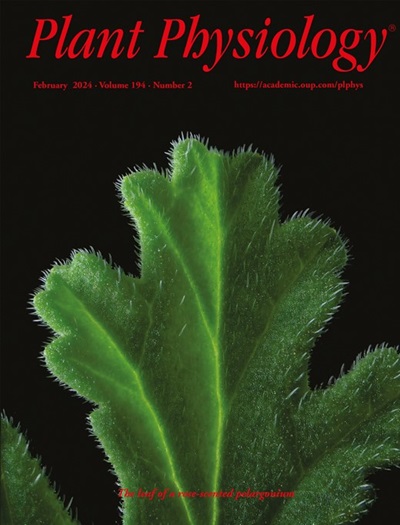Evolutionary trajectories and subfunctionalization of two key methyltransferase regulator subfamilies in plants.
IF 6.5
1区 生物学
Q1 PLANT SCIENCES
引用次数: 0
Abstract
DNA methylation, a conserved epigenetic mark in both plants and animals, plays a critical role in growth, development, and adaptability. This study explores the origin, evolution, and functional diversification of two key methyltransferase regulators, DNAJ domain-containing protein 1/2/3 (DNAJ1/2/3) and SU(VAR)3-9 HOMOLOG 1/3 (SUVH1/3), in plants. By analyzing genomic data from 21 algae and 86 land plants, we discovered that DNAJ1/2/3 originated within Magnoliopsida, while SUVH1/3 emerged in ferns and evolved through retrotransposition. Both protein families have undergone multiple duplication events and positive selection throughout plant evolution, resulting in their expansion and functional divergence. In dicotyledons, DNAJ1/2/3 diverged into three subclades, whereas SUVH1/3 underwent a common duplication event in its ancestral lineage, resulting in two subgroups. Structural domain analysis revealed that the evolution of PHD fingers in DNAJ1/2/3 and AT domains in SUVH1/3, under selective pressure, enhanced their interaction capabilities and contributed to the formation of complexes involved in DNA methylation and demethylation regulation. Expression profile analysis across various plant taxa demonstrated tissue-specific expression patterns, with higher expression levels observed in meristematic tissues and active cell regions. These findings elucidate the evolutionary patterns of DNAJ1/2/3 and SUVH1/3 and offer insights into their functional diversification in plants.植物中两个关键甲基转移酶调控亚家族的进化轨迹和亚功能化。
DNA甲基化在植物和动物中都是一个保守的表观遗传标记,在生长、发育和适应性中起着关键作用。本研究探讨了植物中两个关键的甲基转移酶调控因子,DNAJ结构域含蛋白1/2/3 (DNAJ1/2/3)和SU(VAR)3-9 HOMOLOG 1/3 (SUVH1/3)的起源、进化和功能多样化。通过对21种藻类和86种陆生植物基因组数据的分析,我们发现DNAJ1/2/3起源于木兰科,而SUVH1/3起源于蕨类植物,并通过反转位进化而来。这两个蛋白家族在植物进化过程中都经历了多次复制事件和正向选择,导致了它们的扩展和功能分化。在双子叶植物中,DNAJ1/2/3分化为三个亚支系,而SUVH1/3在其祖先谱系中经历了共同的重复事件,形成了两个亚支系。结构域分析表明,在选择压力下,DNAJ1/2/3和SUVH1/3结构域的PHD指和AT结构域的进化增强了它们的相互作用能力,并促进了参与DNA甲基化和去甲基化调控的复合物的形成。不同植物类群的表达谱分析显示了组织特异性表达模式,在分生组织和活跃细胞区观察到较高的表达水平。这些发现阐明了DNAJ1/2/3和SUVH1/3的进化模式,并为其在植物中的功能多样化提供了新的思路。
本文章由计算机程序翻译,如有差异,请以英文原文为准。
求助全文
约1分钟内获得全文
求助全文
来源期刊

Plant Physiology
生物-植物科学
CiteScore
12.20
自引率
5.40%
发文量
535
审稿时长
2.3 months
期刊介绍:
Plant Physiology® is a distinguished and highly respected journal with a rich history dating back to its establishment in 1926. It stands as a leading international publication in the field of plant biology, covering a comprehensive range of topics from the molecular and structural aspects of plant life to systems biology and ecophysiology. Recognized as the most highly cited journal in plant sciences, Plant Physiology® is a testament to its commitment to excellence and the dissemination of groundbreaking research.
As the official publication of the American Society of Plant Biologists, Plant Physiology® upholds rigorous peer-review standards, ensuring that the scientific community receives the highest quality research. The journal releases 12 issues annually, providing a steady stream of new findings and insights to its readership.
 求助内容:
求助内容: 应助结果提醒方式:
应助结果提醒方式:


